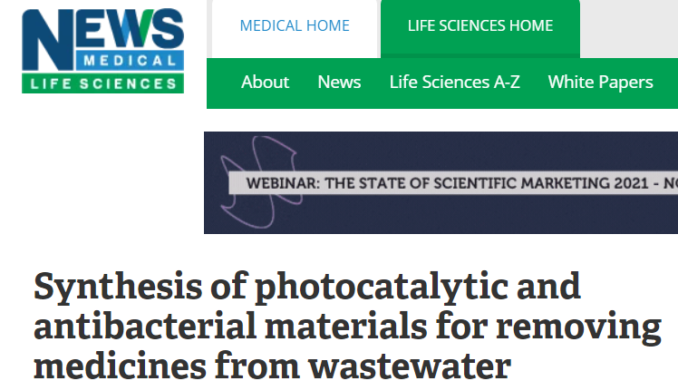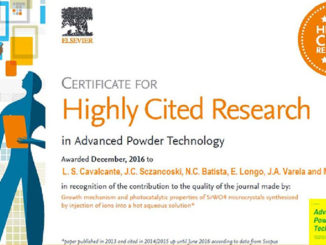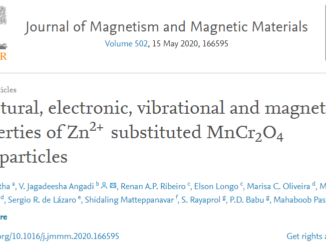
Synthesis of photocatalytic and antibacterial materials for removing medicines from wastewater
Reviewed by Emily Henderson, B.Sc.
The Theoretical and Computational Chemistry Laboratory (QTC) of the Jaume I University of Castellón (UJI), in collaboration with the Centre for the Development of Functional Materials (CDMF) of the Universidad Federal de São Carlos (UFSCar), has published an article entitled “Selective Synthesis of α-, β-, and γ-Ag2WO4 Polymorphs: Promising Platforms for Photocatalytic and Antibacterial Materials” in scientific journal Inorganic Chemistry, which showcases new photocatalytic and antibacterial materials to remove medicines from wastewater.
The study reveals a procedure, with a simple method at ambient temperature and without using surfactants, that enables the selective synthesis of silver tungstate polymorphs (Ag2WO4), known as α-, β-, and γ; these two benefits make it easier to manufacture these materials on an industrial level. Furthermore, the research discusses the possible photocatalytic and antimicrobial mechanisms of the polymorphs, as well as the processes of formation and growth.
Initially, the silver tungsten polymorphs (phases α, β, and γ) were synthesized selectively by precipitation, controlling the volumetric relations of the two dissolution precursors: silver nitrate and sodium tungsten. After surpassing these phases, the structural, microstructural and electronic properties of the material was studied using a combination of experimental techniques.
Then, the structure-activity relations between the morphology and photocatalytic activities were analyzed on a radiation of ultraviolet light, putting special emphasis on the degradation of the amiloride medicine, a diuretic that prevents the body from absorbing too much salt and helps control sodium levels, and antibacterial properties for the removal of Staphylococcus aureus (resistant to penicillin).
Several analysis and characterization methods were used in the research, such as X-ray diffraction and Rietveld refinement, X-ray absorption spectroscopy, field emission scanning electron microscopy and photoluminescence images, among others. First principal calculations were also made on the functional theory of density.
The research team will carry out theoretical and computational studies to supplement and rationalize the experimental results, which have enabled a detailed understanding of the atomic level, morphology and external surfaces of silver tungsten polymorphs, which are responsible for photocatalytic and antibacterial activities.
The results suggest that even though α-Ag2WO4 was the most stable and most researched phase, β-Ag2WO4 had the best results for the explored uses. “Now we want to research other behaviors and uses of the β- and γ-Ag2WO4 phases, the least stables ones, and therefore, the ones that have least been studied until now,” says lecturer Juan Andrés, director of the QTC laboratory of the UJI and head researcher of this project.
For over 30 years, the collaboration between the QTC laboratory and the CDMF has made it possible to obtain new materials and technologies, publishing over 80 articles on semiconductors in the most prestigious journals on chemistry, physics, materials science and nanotechnology.
______________________________________________________________________________
CDMF
CDMF is one of the Research, Innovation and Dissemination Centers (Cepids) supported by the São Paulo State Research Support Foundation (Fapesp), and also receives investment from the National Council for Scientific and Technological Development (CNPq), linked to the National Institute of Science and Technology of Materials in Nanotechnology (INCTMN).




